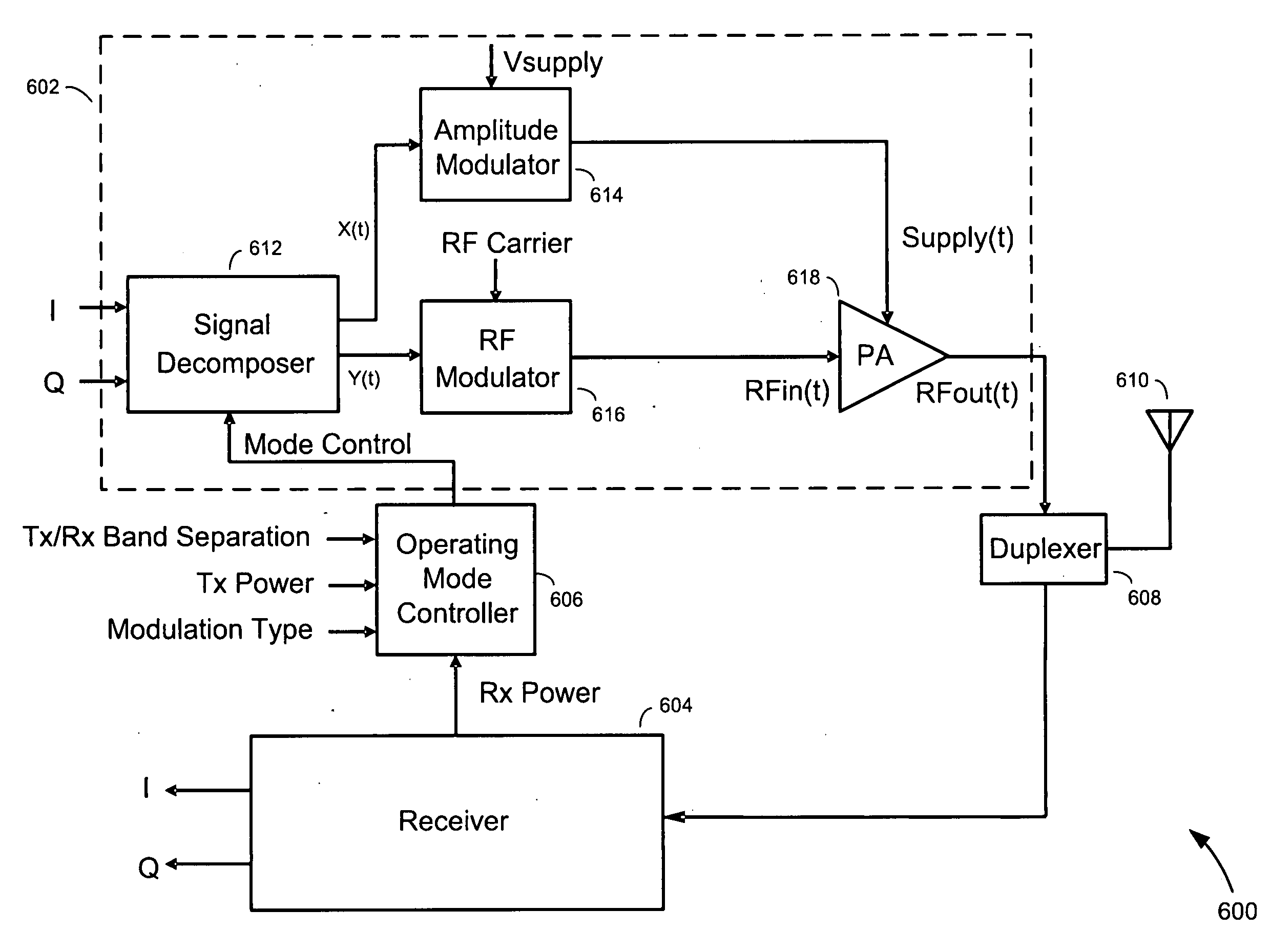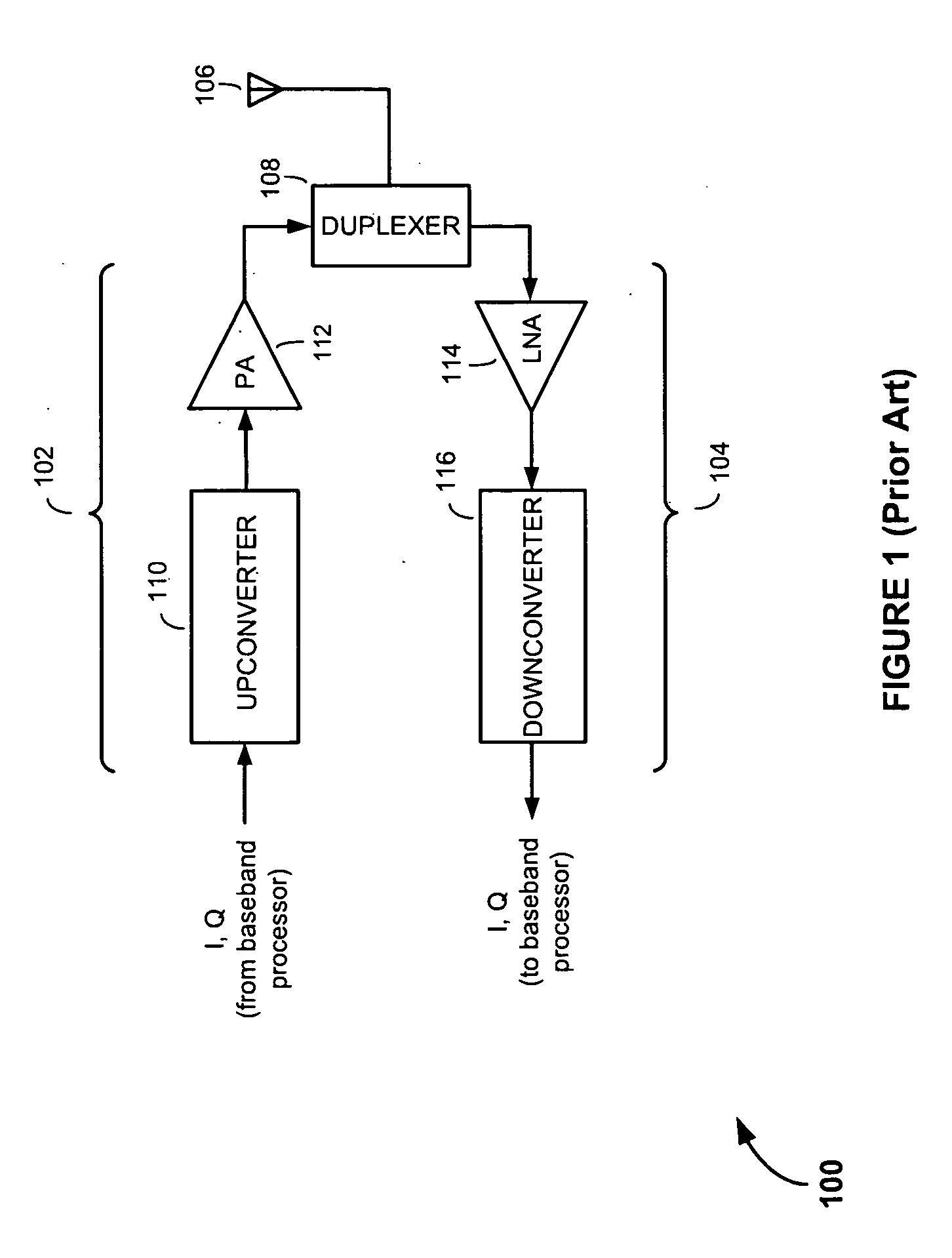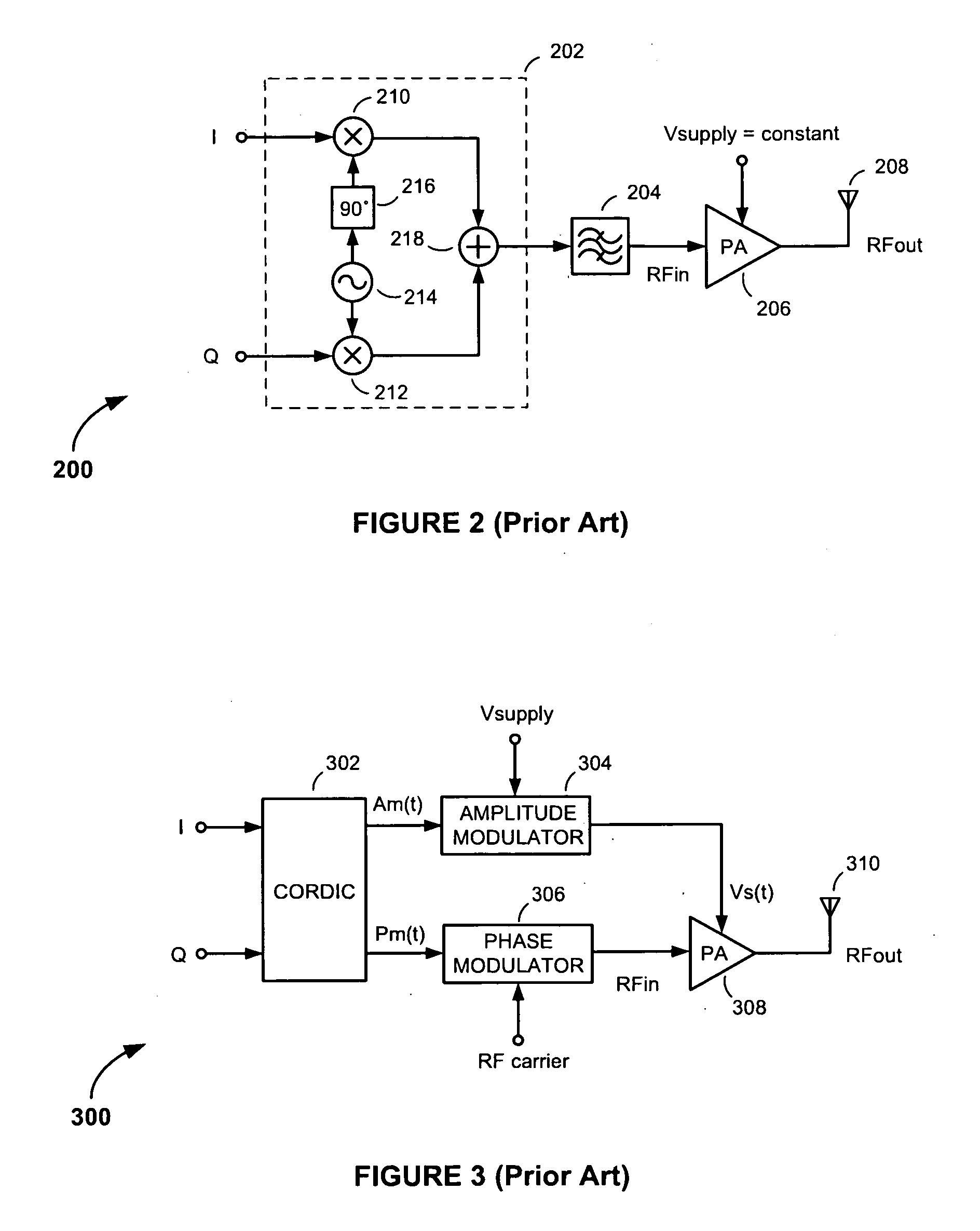Multi-mode transmitter having adaptive operating mode control
a multi-mode transmitter and operating mode technology, applied in the field of communication transmitters, can solve the problems of difficult design of transmitters with both these desirable attributes, inconvenient operation, and inconvenient operation of linear pas configured to operate at reduced drive levels, so as to enhance power efficiency and noise performance, enhance power efficiency, and enhance the power efficiency of multi-mode transmitters
- Summary
- Abstract
- Description
- Claims
- Application Information
AI Technical Summary
Benefits of technology
Problems solved by technology
Method used
Image
Examples
Embodiment Construction
[0030]Referring to FIG. 6, there is shown a transceiver apparatus 600, according to an embodiment of the present invention. The transceiver apparatus 600 comprises a multi-mode transmitter 602, a receiver 604, an operating mode controller 606, a duplexer 608, and an antenna 610.
[0031]The multi-mode transmitter 602 includes a signal decomposer 612, an amplitude modulator 614 configured within a first modulation path, a radio frequency (RF) modulator 616 configured within a second modulation path, and a power amplifier (PA) 618. The amplitude modulator 614 operates to modulate a direct current (DC) power supply signal Vsupply according to amplitude information represented in a first modulation signal X(t) generated and provided by the signal decomposer 612. The resulting amplitude modulated power supply signal Supply(t) is coupled to the power supply input of the PA 618. Meanwhile, the RF modulator 616 operates to modulate an RF carrier signal according to angle (i.e., frequency or ph...
PUM
 Login to View More
Login to View More Abstract
Description
Claims
Application Information
 Login to View More
Login to View More - R&D
- Intellectual Property
- Life Sciences
- Materials
- Tech Scout
- Unparalleled Data Quality
- Higher Quality Content
- 60% Fewer Hallucinations
Browse by: Latest US Patents, China's latest patents, Technical Efficacy Thesaurus, Application Domain, Technology Topic, Popular Technical Reports.
© 2025 PatSnap. All rights reserved.Legal|Privacy policy|Modern Slavery Act Transparency Statement|Sitemap|About US| Contact US: help@patsnap.com



